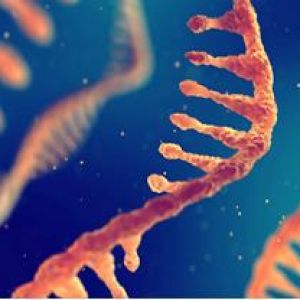Cell Surface Engineering with DNA NanotechnologyPosted by Candy Swift on December 1st, 2021 Surface modification of stem cells has been proven to be a viable method for controlling cell fate into certain phenotypes, which is required to restore function in a specific environment. Cell surface engineering in stem cells could provide them desired characteristics and functions, which could be used in targeted delivery, biosensing, transfection, imaging, and cell fate regulation. According to CDC (Centers for Disease Control and Prevention), nanotechnology is the manipulation of matter on a near-atomic scale to produce new structures, materials and devices. The technology promises scientific advancement in many sectors such as medicine, consumer products, energy, materials and manufacturing. Researchers in bionanotechnology are experimenting with techniques for attaching DNA nanoarrays to cell surfaces for a variety of reasons, such as labeling cell surfaces with functionalized micrometer-sized patches, delivering materials such as nanoparticles or carbon nanotubes to cell surfaces, delivering nucleic acids into the cell for gene silencing, and engineering microtissues of cell/cell networks using single stranded DNA molecules\' self-hybridizing properties. Using two separate approaches, a group of researchers in California has successfully connected self-assembled DNA structures to cancer cells. Alexey Koyfman from the National Center for Macromolecular Imaging at Baylor College of Medicine, the first author of this research titled Cell-Targeted Self-Assembled DNA Nanostructures, introduced that they have demonstrated the wayt that self-assembled DNA arrays being directed to the surface of cells. Biotin-streptavidin interactions were first implemented and then specific antibody-cell surface interactions. The versatile cargo-carrying ability of these DNA arrays was also studied used for directing cell-surface interactions, cell-cell bridging, and positioning multiple cells onto a DNA fabric. The majority of cell surface engineering is accomplished by chemically altering the cell\'s surface. The team, on the other hand, was modifying cell surfaces by adding DNA cell patches. They also used this technology to create microtissues by encapsulating cells in enormous DNA arrays. Since prior study indicated that stem cell fate may be regulated by exogenous small molecules, the team believes that the fate of stem cells might be driven utilizing their targeted DNA structures carrying molecular cargo. Three single-stranded DNA molecules were organized into hexagonal units repeated every 30 nanometers and into extensive networks reaching several micrometers by the researchers. Their initial method for attaching DNA arrays to cells is to use lysine-reactive biotin in a nonspecific way. Their second technique for directing DNA arrays to cancer cells is similar to the first, but it relies on interactions between cell-specific surface proteins and antibodies. This DNA nanotechnology research might have three applications. Hundreds of micron-long DNA arrays might be used to enclose a number of cells, resulting in cell-cell networks that could be beneficial in tissue engineering. Smaller DNA arrays might be employed for molecular delivery to the cell surface or cellular screening by attaching to single cells and coupling fluorescent molecules. Controlling the size of the DNA scaffold bound to a cell is one of the challenges, and different applications can be achieved by varying the size of the DNA patch. Like it? Share it!More by this author |


